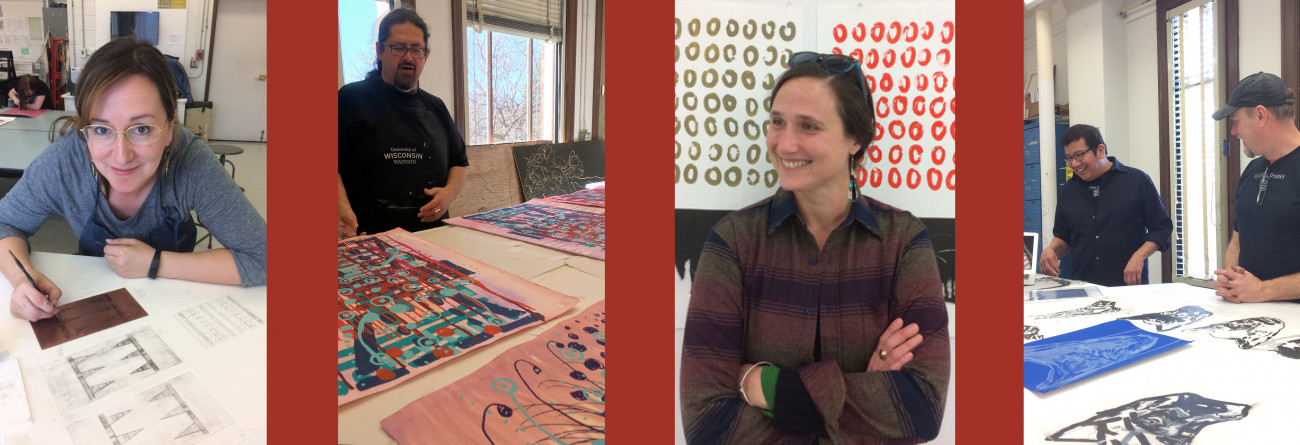The Shape Of Things: New Approaches To Indigenous Abstraction
March 2 2018 - May 28 2018
Over the past two years, MAM, MATRIX Press, and the University of Montana School of Art have been working with four artists—Molly Murphy Adams (Oglala Lakota), John Hitchcock (Comanche), Sara Siestreem (Hanis Coos/Confederated Tribes of Coos, Lower Umpqua, and Siuslaw Tribes), and Duane Slick (Meskwaki/Nebraska Ho-Chunk)—who were each invited to participate in printmaking residencies generously supported by the Andy Warhol Foundation for the Visual Arts. Each artist visited Missoula for one week to create new work at MATRIX Press, interact with the community, and offer a public lecture about their artistic practice. Artists weren’t directed to make work in any given style, just to follow their interests with the understanding that the results would be presented as part of this exhibition exploring abstraction.
Murphy Adams beads directly onto drypoint etchings to create complex artworks that can be described as both object and image, as well as repeated linocut block prints using traditional geometric patterns and designs. Hitchcock, who learned how to draw by sketching beading patterns for his grandmother, combines shapes and patterns captured in his sketchbook to create serigraphs with hand-drawn elements that focus on colors significant to the Comanche.
Siestreem’s suite of photolithography images, Thanks Giving/Giving Thanks combine an abstract grid of hand-drawn circles, with scanned photographs of the artist’s hand forming symbolic gestures in support of the Water Protectors who protested the Dakota Access Pipeline, cautioning patience, prayer, and peace.
Slick, whose residency is forthcoming in February, will create prints that use narrative, stories, and myths as the basis for abstract imagery.
On the subject of abstraction, artist and author Gail Tremblay states, “Historically, Indigenous peoples have well-established traditions of both abstract and highly stylized representational design. Some visual symbols people use are mnemonic and make knowledgeable viewers who see them and think of stories associated with them. Contemporary Native artists are influenced by such aesthetic traditions and at the same time they are trained to use a wide variety of media and styles used by contemporary artists around the world.”


